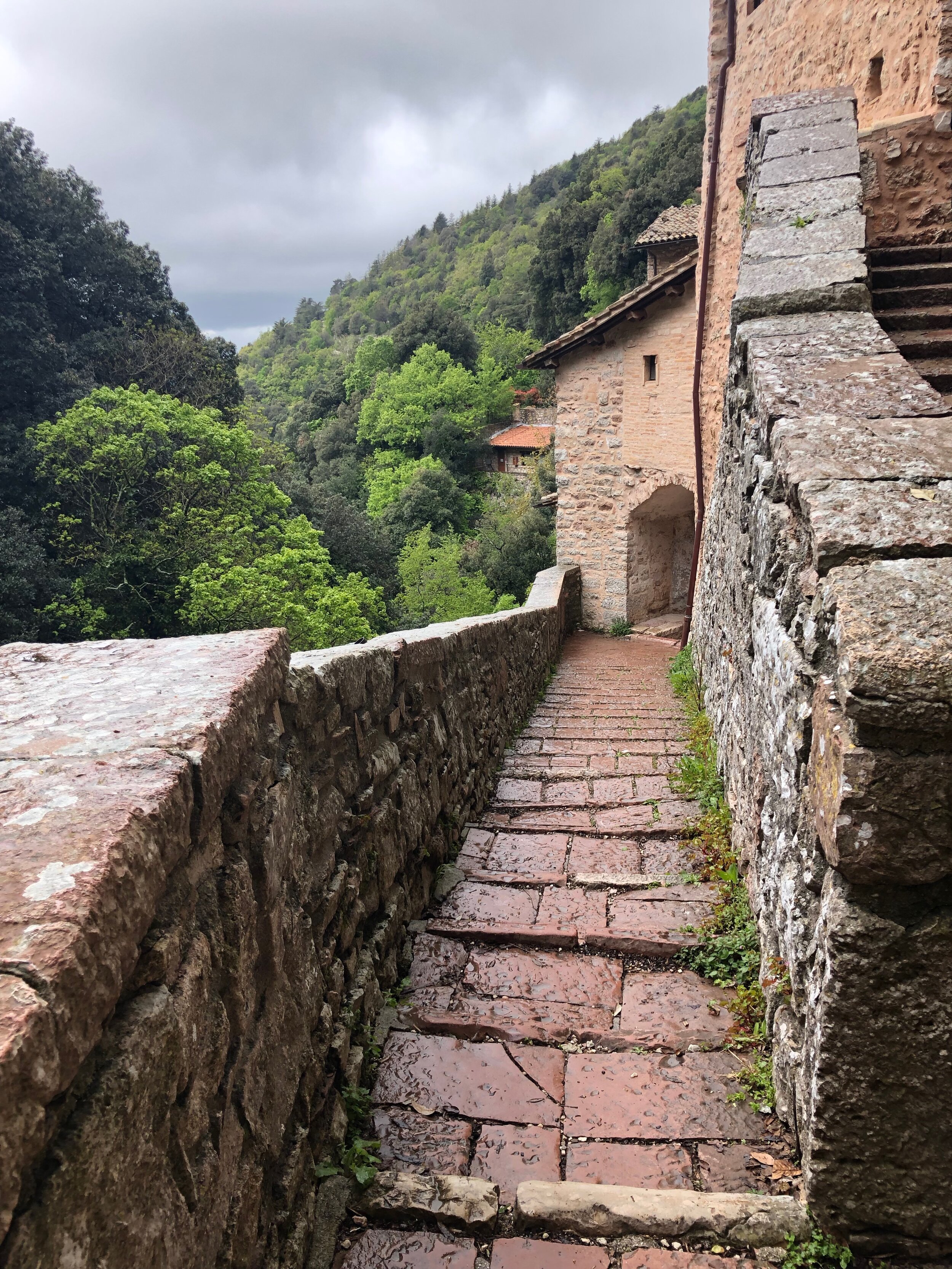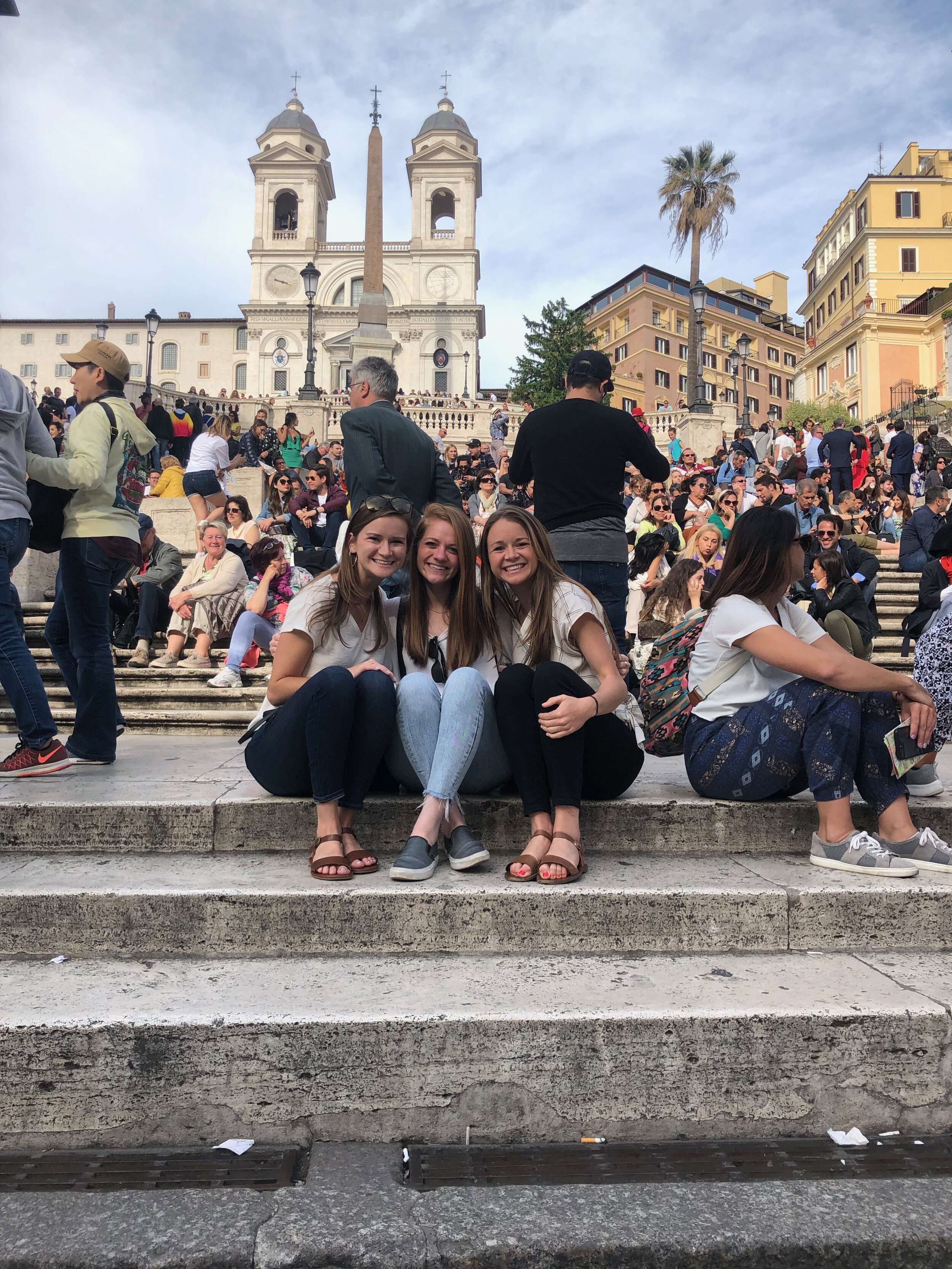Travels through Five of the Iconic Destinations
Last summer, the opportunity arose for a trip with my mom, sister, and best friend. My first and only trip to Italy had been during the summer of 2010 following my freshman year at the University of Georgia. For two months that summer, I stayed with a host family in the small village of Bardolino on the eastern shores of Lago di Garda in northern Italy. I was eager to return to Italy again and thrilled to see both my host family and new places during this trip to one of the most timelessly elegant places in Europe.
Assisi, Umbria
LAST SUMMER, THE OPPORTUNITY AROSE FOR A TRIP WITH my mom, sister, and best friend. My first and only trip to Italy had been during the summer of 2010 following my freshman year at the University of Georgia. For two months that summer, I stayed with a host family in the small village of Bardolino on the eastern shores of Lago di Garda in northern Italy. I was eager to return to Italy again and thrilled to see both my host family and new places during this trip to one of the most timelessly elegant places in Europe. Assisi, Umbria Assisi is located in Umbria, the only region in Italy that’s completely landlocked. During our two hour drive from FCO airport in Rome, my mom and I looked out the car window mesmerized by the fading light accenting the ever increasing mountainous region. “You won’t see any skinny people there,” Marco, our driver, said with a laugh. “Too much good food — wild boar, truffles.” The small, tranquil town is built into a steep hillside. The prominent Basilica di San Francesco, built in the 13th century to honor St. Francis, is one of the world’s most important pilgrimage sites and the main driver of the nearly four million tourists who pass through the otherwise sleepy town. A highlight of our time in Assisi was a three-mile walk to the Eremo delle Carceri, a monastery set in the dense woods. It is here that St. Francis and his followers went to pray. The church and monastery, essentially unchanged since St. Francis’s time, are open to visitors. We quietly walked along the dirt paths that weave across this densely forested terrain, in awe of the natural beauty, secluded sitting areas for contemplation, and the sound of silence in this peaceful landscape. Here, St. Francis founded a successful movement based on peace, love, and understanding. Engulfed in the lush, green forest, I could feel these truths emanating from the ground itself.
Pasta with local truffles from the Umbria region.
The modest buildings where St. Francis and St. Clare practiced their spiritual lives.
Wild boar stew served with traditional Umbrian bread at a restaurant in Assisi.
Sunset over the Piazza del Comune in Assisi.
Exploring the nooks and crannies of the Eremo delle Carceri, the hermitage complex of St. Francis and St. Clare outside of the town of Assisi.
Colorful potted flowers hung along the narrow streets of ancient Assisi.
Greve in Chianti, Tuscany
From Assisi, we traveled by train to Florence where we hired a driver to take us to our next destination, Greve in Chianti. Set in the heart of Tuscany, this friendly town is surrounded by wineries, olive groves, and castle towers. We were able to fully immerse ourselves in this landscape from our AirBnB, the old chapel of La Vecchia Greve that was built in 1100 and has since been converted into a simple rental with jaw-dropping views. From there, it was a downhill one-mile walk into the main plaza of Greve in Chianti. During our few days there, we found the best approach to Greve in Chianti was to fully embrace the Slow Road. The tourism agencies have put together wonderful maps for self-guided walking tours throughout the area. They highlight the world class wineries and restaurants, ancient castles, historical markers, and the local artisans and makers of the Chianti heartland. Each day, we accepted this invitation to take things slowly and see what we would discover during our walking tours through the quaint towns and surrounding countryside. Montefioralle, a tiny hilltop hamlet, about one mile west of Greve in Chianti, was my personal favorite. We could see it every evening from our AirBnB. Another highlight was a private, cooking class we took one evening. Our menu was bruschette al pomodoro (roasted bread with tomato and basil), first course of fresh handmade fettuccine, second course of pollo alla cacciatora (chicken cooked in a pan with tomato sauce), and of course, authentic Italian tiramisù (pudding with coffee and tiramisu cheese). After the several hour class and multi course meal, we slowly walked back up the hill to our accommodation with new skills and culinary knowledge, fully satisfied stomachs, and a growing appreciation of the strong emphasis on beautifully simple and earthy ingredients that make Tuscan cuisine so memorable.
A vista of Monteforalle, a tiny hilltop hamlet just west of Greve in Chianti.
Reunited with my Italian host family from 2010, the Lornadellis. We enjoyed a long, slow Tuscan lunch in Greve.
As we explored the tiny villages by foot, my eyes were always drawn to the doorways with character.
Can’t visit Italy with out sampling the pizza!
Learning the ropes of the authentic, homemade pasta maker.
Katherine, Mary and Elizabeth in the vineyards of Fattoria Viticcio in Greve.
Rome, Lazio
The pace of life in Rome contrasts greatly to the sleepy towns of Assisi and Greve in Chianti. This iconic city holds more than one could ever hope to uncover and experience in a lifetime, yet alone on one trip. We rented an apartment in Campo dè Fiori just a few blocks from the main Piazza with a bustling produce and flower market. This proved to be a good base camp and central location for our time in Rome as we were able to walk from our apartment to most of the iconic destinations such as the Colosseum, St. Peter’s Square and Basilica, the Pantheon, the Spanish Steps, and the Trevi Fountain. Our only scheduled activity in Rome was a tour of St. Peter’s Basilica and the Vatican Museum. My sister, Elizabeth, had arrived the week prior to attend the wedding of a close college friend. The Catholic ceremony was held in Florence, and the priest, Father Michael, had kindly offered to celebrate Mass with us at one of the many side altars in St. Peter’s Basilica upon his return to Rome. Afterward, we visited for a long time in a nearby coffee shop and over cappuccinos and doughnuts listened to him share his life story and work with the Church. The sheer size of Vatican City and the feeling you get walking into St. Peter’s Basilica, the world’s largest church, is overwhelming. Yet, even amidst this awe-inspiring palace and grandeur pulsing with tourists, there are countless opportunities and moments for joy and connection. Whether breathing a silent prayer while standing in the center of St. Peter’s Basilica or getting lost in the beauty of Michelangelo’s Sistine Chapel, this extraordinary experience is unparalleled.
Trevi Fountain, Rome.
Classic Italian Caprese Salad.
Elizabeth, Jill, and Katherine on the Spanish Steps in Rome. Since our trip, the city of Rome has implemented a new rule that prevents anyone from sitting on the famous steps.
Elizabeth and Mary Lacksen outside the Colosseum in Rome.
Father Michael graciously had Mass for us at one of the many alters in St. Peter’s Basilica.
Vatican City at dusk.
Cinque Terre, Ligria
After saying goodbye in Rome to our mom and best friend, Jill, my sister Elizabeth and I traveled north by train to one of our longtime wanderlust destinations, Cinque Terre. We decided to stay in Riomaggiore, considered to be the most peaceful and quiet of the fishing villages. Over the course of a few days, we were able to explore the other four towns that make up the UNESCO World Heritage Site: Monterosso, Vernazza, Corniglia, and Manarola. Each is unquestionably beautiful yet distinctive in its own unique way. While the local train conveniently connects all five towns, we found that we much preferred hiking the footpaths through the steep terrain. Hiking these steep trails provided stunning views of the clear blue sea and an appreciation and respect for the people who, for centuries, have farmed and worked the terraced land to grow food and raise livestock. Though sections of the trail were still closed due to restoration efforts from damaging floods, we thoroughly enjoyed the portions that were open and meandered through olive groves, terraced vineyards, eventually turning into switch back paths leading us back down into the cliff-clinging villages below. One of the benefits of staying in Cinque Terre was the crowds significantly diminished by late afternoon as many tourists just come in by train for the day. For these reasons, evening time was very quiet and relaxing as the tiny fishing villages glowed with lights and the sun sank below the watery horizon into the Ligurian Sea.
The coastal trail into Monterosso, the largest of the five towns.
Taking a hiking break along the coast in Cinque Terre.
Fresh seafood pasta in Cinque Terre.
Hiking the trail system between the villages of Cinque Terre.
Umbrellas and laundry lines in Vernazza, Cinque Terre.
A rail train, offering spectacular window views, connects all fve villages in Cinque Terre.
The rugged coastline of Cinque Terre
Lake Como, Lombardy
Our final stop of our Italian adventure took us farther north to the dramatic shores of Lake Como. Here, we stayed in Bellano on the eastern shore of the lake. From our apartment, we had breathtaking views of the snowcapped Alps to the north, but the shores along the eastern and western sides of the lake are also quite mountainous. We hiked sections of ancient trails through dense forests and terraced plots where locals still live and tend to land. When we didn’t want to hike, we found the ferry system extremely convenient and easy to use for exploring the villages along the opposite shore. The deep blue water of Lake Como is mesmerizing. Whether hiking on a hillside looking down on the lakeside towns or sipping an Aperol Spritz at a cafe in one of the quaint harbours, I could watch the calm, quiet water for a long time. One day we toured the gardens and 17th century lakeside Villa Carlotta. The lush gardens stretch on and on, not to be outdone by the opulent elegance inside the neoclassical villa. In Bellagio, we stumbled upon the shop of Pierangelo Masciadri, tucked among the cobblestoned alleyways of this world-famous destination. He designed President Bill Clinton’s election-day winning tie. Completing his presidential collection, Masciardri also has a design for President George W. Bush and a tie gifted to President Barack Obama. Each lakeside town is full of shops showcasing incredible artisans and makers of jewelry, leather, fashion, and culinary delights. While the entire lake offers countless gardens, our favorite was The Villa Melzi gardens just south of Bellagio. The sprawling complex has a vast collection of plants, trees, and flowers that only add to the enchanting draw of Lake Como.
Exploring the Villa Melzi Gardens along Lake Como.
Bellagio, Lake Como.
Seeing the Presidential tie display at Pierangelo Masciadri in Bellagio, Lake Como.
Floral finds along the mountainous trails above Lake Como.
Lake Como, Italy.
Italy offers hospitality, dramatic landscapes, diverse roads, and culinary and cultural adventures for all types of travelers. Whether you seek the small, quiet villages of Tuscany, the hustle and bustle of ancient Rome, or the peace and serenity found in Assisi and Lake Como, Italy truly has something for everyone.































